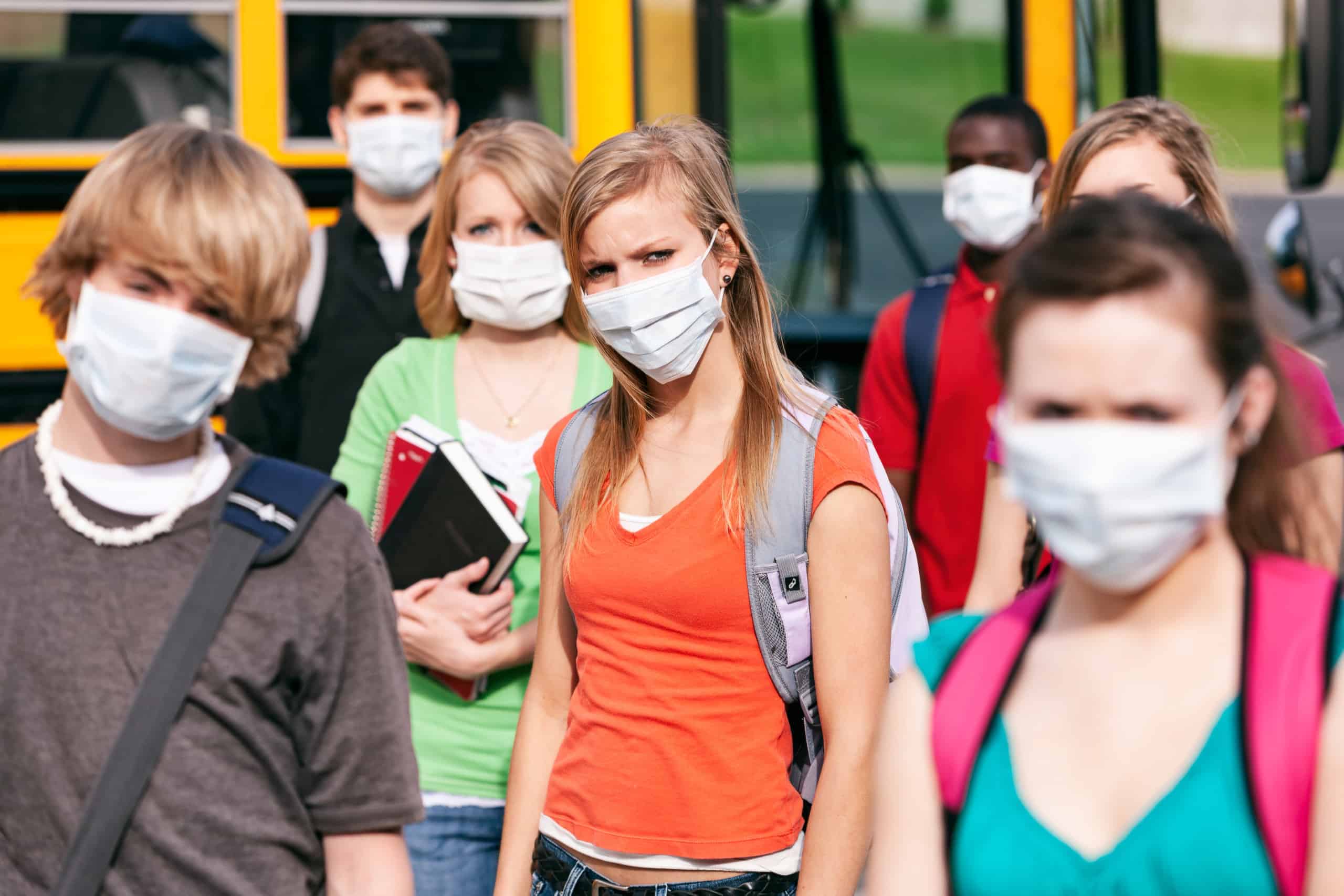As schools close across the country, many families worry about how their kids will get meals during the day since most parents still have to work. Luckily, some school districts have allowed their bus drivers to continue working by delivering meals to students during the shutdown. Schools in Michigan closed a couple of weeks ago due to the Covid-19 pandemic. But hundreds of students still wait for the bus to roll up.
In Roscommon Area Public Schools, a rural district in the northern Lower Peninsula, bus drivers follow their regular routes looking for kids that need meals. The school district’s social workers and secretaries help with deliveries. They distribute to the children two plastic grocery bags filled with breakfast and lunch for four days at a time. They also have been giving kids a list of food pantries in the area if they need more assistance.
Without the bus drivers checking on kids, they might not get meals until nighttime when their parents get home. Other school districts, such as some in Oregon and Kentucky, have realized this and have allowed bus drivers to continue driving their routes to check on kids.
Bus Drivers In Michigan Deliver Meals to Kids While Schools Are Closed
In the rural Roscommon area, school lunches look a little different than usual during the shutdown. Michigan schools had to close for at least three weeks to try to contain the spread of the virus. Schools are now scheduled to reopen April 6, but school officials have discussed continuing the closures into spring.
For many children, the break from school feels like a vacation, but for others, no school means they won’t have access to the free meals provided by the district. To make sure kids can still eat during the crisis, schools have come together to help those in need. They’ve turned buses into food trucks in just a few days to meet the demands of the students who rely on them for food.
Some larger school districts organized meal pick up sites so that families can drive up to get pre-made meals. In smaller regions where kids don’t have transportation to pick up food, however, the bus delivery makes more sense.
The Challenge of Rural School Districts
In rural school districts in northern Michigan, 850 students are scattered across almost 350 square miles, and many of their parents have to go to work during the day. Two-thirds of the students come from families who qualify for free or reduced-price lunches due to income. These students might be miles from a pickup site and not have reliable transportation, so the district decided they had to do something to help out.
Almost 600 kids in the area would likely go without meals during the day if not for the buses turned into food trucks. The seats generally filled with kids on their way to school are now piled high with bags of food for the students who need them for daily nutrition.
Roscommon’s eight school buses currently used solely to deliver food to children in need. The cafeterias fill each day with teachers, secretaries, and lunch ladies. Together, they fill up grocery bags with nutritious foods such as ham sandwiches, fruits such as apples and oranges, carrot sticks, and granola snacks. The school district decided they would continue paying workers. In their hearts, they knew that their work didn’t stop just because the students were sheltering at home.
It turns out the kids still needed them, so they all got to work to provide for their students. Michigan Governor Gretchen Whitmer asked schools to keep paying staff, so school officials reached out to employees to see if they could come in to help feed the kids. Most people agreed wholeheartedly.
The buses travel hundreds of miles daily on rural dirt roads to deliver meals. While the work has changed, the route stays the same. The school’s social worker typically holds counseling sessions to talk to kids about challenging situations at home, such as evictions, utility shutoffs, and other painful parts of their lives. She uses the opportunity to deliver food to check in with them and ask about their families and home lives.
A Looming Problem: Supply Shortages
However, she worries about the possibility of the shutdown lasting longer than three weeks. The schools are already running low on supplies, as they have to use crackers as a grain source when they’d typically include foods such as rice. They’d have to deal with supply chain problems with food delivery due to the pandemic. However, they’re trying to work with what they’ve got so they can keep bringing food to kids.
At the end of the bus driver’s route last Thursday, he had brought food to 82 kids to keep them fed through the weekend. In total, the eight buses provided meals for 539 kids.
 Final Thoughts: Our Nation’s Children Could Suffer Hunger Without Selfless People
Final Thoughts: Our Nation’s Children Could Suffer Hunger Without Selfless People
This scenario plays out across the nation during this crisis. This one school district does not stand alone in the commitment to feeding our children.
Do you know of anyone bringing meals to kids during this tough time? Please share them with us in the comments below!


















